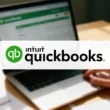Unlike sensitive information in the hands of malicious hackers, confidential or commercially sensitive information, such as customer data or sales plans, is usually well protected. Yet, modern technology means the value of this information is growing, and this, alongside the trend for consumers to take greater control over their own data, has resulted in significant levels of privacy breaches in recent times.
Below are some top tips that will enable to effectively protect sensitive and confidential documents.
1. Ensure you Store them Securely
The safest place to store your confidential documents is on premise. You might choose to give a virtual external hard drive or a computer with a secure network to store confidential data. Keep this locked in a secure cabinet away from the general use of other people, while making sure that only authorized people can access the safe and view your data.
If you want to store confidential documents in the cloud then make sure the files are end-to-end encrypted and additional authentication methods are enforced beyond passwords.
2. Keep the System and Network Safe
You need to use a secure computer, a strong password, and a fingerprint or iris authentication. These are best for protecting your documents from hackers and preventing them from stealing your data.
3. Data Attack Planning
Review and update your data-attack response plan and ensure that you have a breach plan that notifies your users if your system is compromised.
4. Wherever Possible, Protect your Company Network
Do not leave sensitive information on public computers. When you visit public areas, such as an internet cafe, always go through extra security measures such as using 2FA. Be sure to change passwords regularly, as once compromised it could be used to access other documents or systems.
5. Use Strong Security Systems
Enable lock down in the BIOS, BIOS flash and hardware protection so that no data attack can gain access to your system. Companies that do not protect their information often don’t value their customers or they use outdated software and protocols, which makes their systems more vulnerable.
6. Personal Information and Personal Identities
Disable keys to access your computer, as keys can give data attackers remote access to a computer that they can exploit to carry out attacks.
7. Secure Passwords
Make sure that you use strong and complex passwords, don’t share your passwords with others, and if you must write them down then put them on a secure pad.
8. Protection from Remote Data Attacks
Software installations should have a secure system to protect against remote attacks.
Investing in a robust cloud-based encryption device will protect confidential information that is stored on a device. Your security device must be powerful enough to encrypt sensitive information in the cloud and in the device itself.
Ensure that your company uses the appropriate authentication to gain access to the device and protect your data.
9. Gain Efficiencies by Decentralizing your Data Management
All authorized employees should have the opportunity to access and view sensitive data that is stored in the cloud. This will enable a group of people to act as a team if there is an issue. Every organization processing personal data must have in place a method to provide security that conforms to the security standards defined in the regulation.
10. Restricting Data
This will make sure that your organization has a controlled means of collecting and storing information. Even with data retention legislation, there are some instances in which companies are required to store personal information for a certain amount of time.
A company must ensure that it keeps their organization safe and has effective data security, which is where the encryption method should come into play.
11. Ensuring the Security of the Users who are Interacting with your Network
Don’t open a suspicious email, and be sure that your data is safe if a company worker doesn’t have a key to a system. The most effective way to protect the data within your company is by being able to control access to the system, so that you can quickly identify if someone has access to your data and have the ability to restrict their access.
12. Maintain a Vigilant Watch
Spending time online is a necessity in today’s busy world. However, the risks associated with browsing the internet are such that most people are very careful with what they share on the internet.
In fact, we monitor the internet for our sensitive data and we try to delete it as soon as we can. It’s important that your company is vigilant, as a data attack can be prevented if you stay up to date with online security.
PDF DRM: Answer to Document Security
Digital Rights Management (DRM) is a security technology that creates a controlled and isolated environment for data.
As the document is released into this environment, the file is tagged so that it is stored under one document protection level. This is important to the security of the information as the document will have a certain security level so that it can’t be altered.
With benefits such as secure and transparent key management and distribution, no other document security solution is as potent as DRM security for protecting confidential and sensitive documents.
Conclusion
The GDPR is a new law which provides many provisions in relation to data security. If you are a big or a small business that manages the personal data of people in Europe, you must ensure that you are in compliance with the GDPR.
Implementing these security tips should provide you with some of the best data security controls. Do you have the proper security and encryption systems in place? Is it working? Is it implemented correctly? Is it used in a way that complies with the regulations set out by the GDPR? Are you safeguarding your customers’ information? If you answered no, it’s time to get the right DRM solution for your documents.







